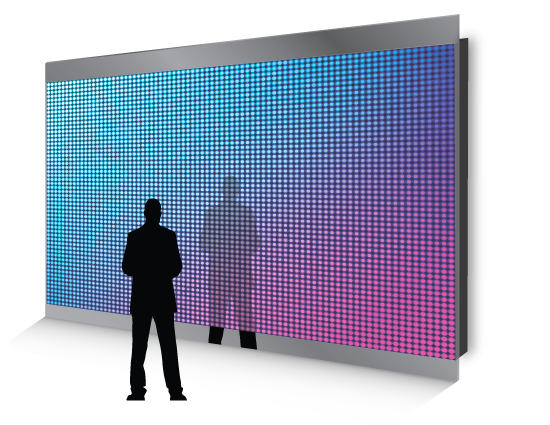Demystifying LED Display Panel Luminance Metrics aiming at Optimal Display Effectiveness
Demystifying LED Display Panel Luminance Metrics aiming at Optimal Display Effectiveness
Blog Article
Light Emitting Diode wall panels are increasingly popular across different environments, from homes to businesses and public spaces. Such screens tend to be recognized due to the vivid and vibrant displays, which make these suitable to communicating data, advertisements, and entertainment. However, understanding the brightness measurements of LED wall screens remains crucial to ensuring optimal visual performance. Brightness is measured in units known as candelas, which show the amount of luminosity is emitted from the panel. A higher the quantity in candelas, the brighter the display is. For, example, a panel boasting one thousand nits stands significantly brighter than a featuring five hundred nits, making it better equipped in brightly lit environments.
When choosing a Light Emitting Diode wall panel, it becomes crucial in take into account the environment in which it will be used. In brightly lit areas, like retail environments and open-air locations, higher higher luminosity rate becomes essential for ensure visibility. On the other hand, within dimmer settings, like cinemas and meeting spaces, lower diminished illumination rate may be adequate. This is because excessive bright unnecessary luminosity within an dim setting may lead in viewer discomfort for the audience, causing it harder to focus with a screen. Thus, comprehending specific particular needs for an setup site will aid with selecting a suitable illumination rate to ensure ideal viewing experience.
Another important factor to consider is the contrast ratio of an Light Emitting Diode panel screen. This ratio measurement indicates the difference exists between the brightest most luminous light versus the darkest black black that the panel can create. An greater differential proportion means that the display can present greater clarity as well as depth, thereby enhances overall visual clarity. For example, a panel with a differential proportion at ten thousand to one will show images with greater brilliant hues as well as sharper details compared to a featuring a proportion of 1,000:1. This is especially important when displaying images and motion graphics which require click this high clarity as well as detail, such as presentations and advertising material.
Moreover, the technology that drives Light Emitting Diode panel panels has an essential role for their brightness as well as total efficiency. Different types of Light Emitting Diode methods, such as OLED as well as Liquid Crystal Display, possess unique traits which impact how brightness is experienced. Organic Light Emitting Diode panels typically provide superior contrast and darker shades, which can improve a viewing experience in dim settings. On the other hand, traditional Light Emitting Diode screens may prove to be more suitable in well-lit spaces due to their capacity for produce higher amounts of brightness. Comprehending these technological variances will guide users to making important site informed decisions according to their individual requirements.
Finally, regular maintenance and calibration for LED wall screens may help preserve ideal brightness as well as efficacy over time. Dust as well as dirt may build up on a screen, affecting its illumination and sharpness in a visual. Periodic cleaning and expert calibration may guarantee that panel panel operates in its optimal, offering consistent image quality. Additionally, some sophisticated LED panel screens come built-in built-in features which allow operators to modify illumination levels as well as color settings based on their wants. Through taking such steps, operators can ensure the their LED panel screens deliver an optimal display efficiency, regardless of where environment in that these are placed.